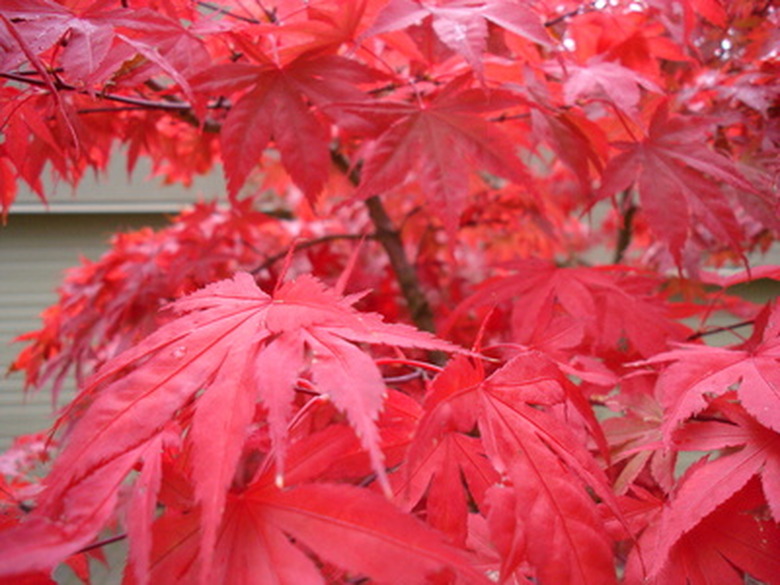How To Save An Almost Dead Japanese Maple Tree
Few things are more striking in a home landscape than a healthy, bright-red Japanese maple. These ornamental maples are prized for their foliage, diminutive size and value as a focal point for garden plantings. Japanese maples may look delicate, with their lacy, red leaves and twisting branches, but they're actually pretty resilient. If your tree is nearly dead, you must quickly diagnose the problem and address it.
Step 1
Look for leaf scorch, which makes the tips of leaves curl and turn brown and will eventually kill the tree. Place taller plantings nearby if that is the case, to prevent the Japanese maple from receiving too much full sun each day. Dappled light is best.
Step 2
Turn over leaves and check their undersides for insects like aphids, which love to chew on Japanese maples. If you find them, spray the leaves with a spray bottle full of water mixed with a teaspoon of dishwashing liquid to deter them. Reapply this mixture after a heavy rain.
Step 3
Check the soil conditions and make sure the soil drains properly. Your Japanese maple may be dying from root rot, or "wet feet." Amend the soil by digging in one part peat and one part sand to one part topsoil until the soil drains well when you pour water on it. Cultivate the soil with a garden spade to keep it loose and aerated.
Step 4
Sprinkle a few pinches of granular fertilizer around the base of the tree, and water it in over the next few weeks. Be sure to do this in summer, not fall, as you do not want to stimulate the tree into growing just before winter.
Step 5
Use pruning shears to cut away any dead wood or branches in the fall to increase air circulation through the tree and prevent fungus from developing. Cut branches a half inch out from the trunk to avoid damaging the trunk's bark while it's in a weakened state.
Tip
If your Japanese maple is already nearly dead, you may not be able to save it. Scold yourself for not noticing it sooner, and buy another tree. Plant the new tree in a different location, with proper light, water and soil conditions.
